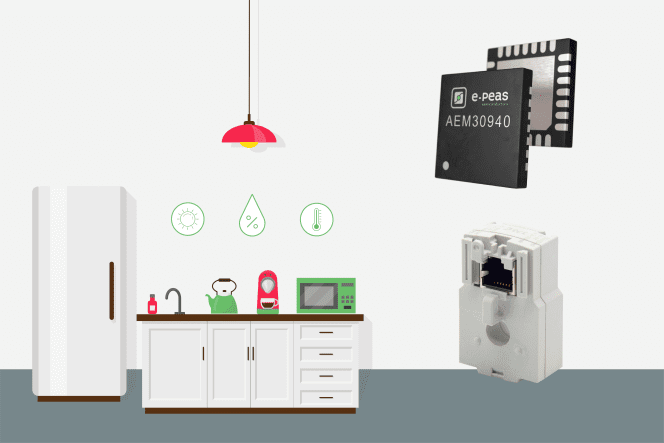
Two French firms have developed an innovative energy harvesting platform that is based on induction. The technology – the fruit of a collaboration between e-peas, an energy harvesting specialist, and magnetic components manufacturer TCT – is being positioned for an important role within building automation and smart-grid deployments.
The companies have now demonstrated this platform in action. A video of it can be viewed here.
The demonstration will consist of a compact TCT current generator accompanied by an e-peas AEM30940 PMIC. This current generator will be placed onto an electricity cable (carrying a few amps of AC current). Through induction it will be able to harvest energy from the AC current passing through the cable, with the AEM30940 (in combination with a semi-active rectifier) converting and managing the current delivered. The DC current will subsequently be used to power a connected hardware device comprising multiple sensors and Bluetooth Low Energy (BLE) beacon connectivity. An LED indicator is included to show that this is in operation.
The 3µW cold start power of the AEM30940, claimed to be much lower than competing solutions, is seemingly pivotal in allowing energy to be efficiently harvested from the AC source. Also, the low internal leakage of this PMIC means it is able to take care of the storage of extracted energy and provide a regulated voltage to the connected low-power hardware, says the firm. The AEM30940’s linear converters provide two independent regulated voltages, so no additional converters needed. The connected hardware will monitor ambient parameters (temperature, humidity and light levels) and will then transmit this data over the BLE link.
“By using inductance, battery-less control and monitoring units will have the functionality needed to draw energy from electrical cabling that is already deployed. The logistical difficulties of having to periodically replace battery cells can be completely avoided, presenting facilities management with greater convenience and lower operational costs,” said Alexandre Decombejean, Sales Manager at TCT. “The energy harvester attached to the cable is built around a specific soft magnetic material core with high permeability, and will reach an elevated output voltage even with a low current.”
“We have already been able to validate the effectiveness of e-peas technology in harvesting energy from thermal, vibrational, RF and photovoltaic sources. Now, by combining our technology with TCT’s, we have the ability to do so via inductance,” said Christian Ferrier, CMO of e-peas. “This opens up an array of exciting new market opportunities for us as a leader company in energy harvesting and processing solutions.”






